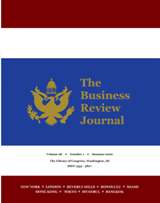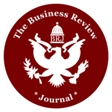|
Global
Disruption and E-Government
Dr. Tony Carter, University
of New Haven, CT
ABSTRACT
Global issues surrounding
the emergence of information and knowledge are key factors in developing and
maintaining a competitive advantage for firms. This is organized around two
ideas, 1) knowledge as a manageable asset, and 2) why people in organizations
sometimes do not use what they know. A basic assumption here is that
organizations are complex adaptive systems operating in highly competitive,
information and knowledge rich environments. Progress in online service delivery continues in
most countries around the world. Many countries have put in place e-government
initiatives and information and communication technologies applications for the
people to further enhance public sector efficiencies and streamline governance
systems to support sustainable development. Among the e-government leaders,
innovative technology solutions have gained special recognition as the means to
revitalize lagging economic and social sectors. The overall conclusion that
emerges from today’s recessionary world climate is that while it is important to
continue with service delivery, governments must increasingly begin to rethink
in terms of e-government and e-governance placing greater emphasis on
institutional linkages between and among the tiered government structures in a
bid to create synergy for inclusive sustainable development. An important
aspect of this approach is to widen the scope of e-government for a
transformative role of the government towards cohesive, coordinated, and
integrated processes and institutions through which such sustainable development
takes place (Carter, 2013) In the current recessionary world climate, in which
the lives of people have become ever more interconnected, governments have been
harnessing the power of information and communications technologies (ICT)
for delivering much needed sustainability in social and economic services to
their citizens. As part of this shift towards e-government, there has been an
increasing recognition that efforts towards a holistic approach to governance
for sustainable development require strategic national planning to ensure
efficacy, transparency, responsiveness, participation and inclusion in the
delivery of public services.
Full text
An Analysis of Best
Practices of Cooperative Education in the U.S. With The Purpose of Addressing
Various Armenian Engineering Education Problems
Sona Tadevosyan,
College of Engineering and Technology, Brigham Young University, UT
Dr. Geoffrey A. Wright,
College of Engineering and Technology, Brigham Young University, UT
ABSTRACT
The purpose of this paper
is to define best practices of cooperative education, and make suggestions of
how the best practices can be implemented in countries where cooperative
education either is not practiced, or is not effectively being used, specially
in the context of engineering and technology disciplines. The country of Armenia
was used as the anecdote of where cooperative education is needed in these
disciplines, but where it is not being used effectively. It is believed the
definitions and suggestions outlined in this paper will help the field of
cooperative education by providing definitions of best practice, and an example
of how a country can more effectively implement cooperative education.
Information Technology and engineering play very important roles in the Armenian
economy (FEI, 2008, 2001). In fact, the Government of Armenia in 2000 declared
development of Information and Communication Technologies (ICT) and engineering
to be one of the country’s priorities for economic development (FEI, 2008,
2014). The ICT sector, including the engineering services segment, is one of
only a few competitive sectors of the country (FEI, 2008). Consequently, it is
important for Armenia to do all it can to support the growth of this sector,
including investing in the development of an education system capable of
producing a strong technical workforce with skills adapted to the demands of the
global marketplace. During the last 15 years, Armenia has made progress in
developing a technical workforce by providing new training programs in areas
such as software development, programming, and chip design.
Full text
Evaluating the
Cost-Effectiveness of Instruction Expenditures on Kauai’s Public High School
Completion
Dr. Larson Ng, University
of Hawai‘i at Mānoa, Honolulu, Hawai‘i
ABSTRACT
The following study
attempted to analyze the cost-effectiveness of instruction expenditures on
public high school completers on Hawai‘i’s island of Kauai. Using the high
schools that comprise the Kauai District, a correlation and bivariate regression
procedure were employed to determine the nature and econometric relationship
between instruction expenditures and high school completion from 2000 to 2007.
Although instruction expenditures had predominately increased for all high
schools, increases in completion were not observed for all schools. Moreover,
with the minor exception of Niihau High and Elementary School, there was no
conclusive econometric evidence to substantiate the idea that more expenditure
in instruction leads to higher levels of high school completion during 2000 to
2007. Instruction is a critically important factor that contributes to high
school completion. Although there are many techniques to measure the
productivity of instruction, assessing its effectiveness through a financial
perspective remains one practical way to accomplish this task (Beard, 2009).
Consequently, this study will attempt to test whether increases in instruction
expenditures result in higher numbers of high school completion by analyzing the
Hawai‘i's Department of Education’s (DOE) high school instruction expenditures
(i.e., teacher salaries and benefits, substitutes, instructional
paraprofessionals, pupil-use technology, software and instructional materials,
trips, and supplies) and its econometric relationship with high school
completers on Kauai (Hawai‘i Department of Education, n.d.). With this research,
it is hoped that the results will provide a current snapshot of whether
increased instruction funding will improve public high school completion on
Kauai. The following section will go over the high school instruction
expenditures, size of its graduation classes, and high school completers for the
DOE’s district of Kauai as well as all of the individual high schools that
comprise that district from 2000 to 2007.
Full text
Regression and
Empirical Analysis on Real Estate Pricing and Services Using Price-Quality
Heuristics
Dr. Freddy Su Jin Lee,
California State University at Los Angeles, CA
ABSTRACT
When gauging quality,
consumers often use price, brand or other signals of quality to gauge the
quality. In this paper, we test three propositions which show how the consumer
uses the price-perceived quality in real estate purchases. This may be affected
by the property neighborhood, brand of the brokerage and the brand of the Escrow
company. Our goal in this paper is to test these propositions that can
motivate empirical research pertaining to the factors that influence how
consumers use the price-perceived quality heuristic to determine whether the
real estate service is worth the money that they are paying for. We will also
conduct a regression analysis on the likelihood of consumers selling their homes
based on these parameters. The findings will point to several ways that
brokerages and escrow companies can develop pricing strategies to raise consumer
satisfaction and increase revenue. Primary among them are the development and
articulation of whether to set a asking price based of neighborhood perceptions,
brokerage brand and escrow brand. The MLS (Multiple Listing Service) is a
platform used in North America where consumers who are selling their properties
engage a Brokerage to help them list the property in that platform. This
platform is available to the general public with limited information and
available to other service professionals with full information. As information
is asymmetric here to all professionals and parties, this would provide the
basis for our data to conduct the empirical analysis. Information in the MLS
(Multiple Listing Service) includes the asking price and the sold price (Hendel
et al 1998). It is generally believed that the higher the asking price, the
higher the quality or in this case it is proxy to the desirability of the
location. Another price component that surfaces in the MLS is the commission
given out to the listing broker. The seller generally allocates a certain
percentage of the transacted price as commission to the listing brokerage which
will split it with the cooperating brokerage. The commission is set arbitrarily
at market rates in franchise branded and independent brokerages.
Full text
Marketing Pickles as a
Gourmet Condiment
Dr. David L. Ralph,
Pepperdine University, CA
Dr. Stacy M. P. Schmidt,
California State University, Bakersfield, CA
Dr. Donald Atwater,
Pepperdine University, CA
ABSTRACT
Cucumbers and pickles are
not a new product to the market but an opportunity for growth lies in the
gourmet condiment segment of the market. A variety of gourmet pickles have
entered the market. Consumers now expect gourmet options on a variety of food
categories and this creates an opening for gourmet pickles. Gourmet pickles
differ greatly by taste and texture. Gourmet pickles producers need to create a
brand to establish a following and loyal consumer. The study looks at the
pickle market and examines ten gourmet pickle companies operating in the United
States of America. The study finds that the ten companies use different brine
creating different flavors for their pickles. Gourmet pickles are either
refrigerated or not refrigerated. This affects shelf life and shipping of the
pickles. The companies use a variety of retail locations as well as online
shops to sell their products to consumers. One of the companies has even got a
chain restaurant to use their pickles as snacks on every dining table at their
restaurants. The companies are able to expand their markets by creating a
variety of flavors for the pickles. They create pickles with different spice
levels to entice different consumers. They also use the pickling techniques to
pickle a variety of other foods including eggs, sauerkraut, carrots, okra,
beets, asparagus, and beans. The pickle market has been dominated by a few
pickle companies but gourmet pickles have created a market for small pickle
companies. These independent pickle companies can be successful in the gourmet
pickle market by creating a following and having a well liked taste. This paper
looks at ten of the gourmet pickle companies currently operating in the United
States of America. Historically, pickles have been part of the condiment
segment. Pickles now have their very own specialty category expanding their
role in the condiments market. Pickles now have a space in the gourmet condiment
segment. A study conducted by Miller and Zandstra (2013) of the Department of
Agricultural, Food, and Resource Economics at Michigan State University analyzed
pickle production in Michigan and found that a shift in demand to specialty
pickle products is on the rise. U.S. Cucumber and Gherkins trade experienced
continuous growth in imports from 1998-2010. (See Figure 1, Miller).
Full text
A System Dynamics
Approach to Evaluate the Impacts of Taoyuan Aerotropolis Project on
Employment,
Population Growth, Housing Demand, and Transport
Dr. Oliver F. Shyr,
National Cheng Kung University, Taiwan
Dr. Chien Hung Tu,
National Cheng Kung University, Taiwan
Dr. Chao-Yi Huang,
National Cheng Kung University, Taiwan
ABSTRACT
The aim of the project is
to apply the technique of system dynamic to analyze the impacts of mega
transport projects, such as Taoyuan Aerotropolis and rapid transit systems, on
urban development. In the last decade, air freight transport has been the most
attractive and competitive form of logistics. Hence, the gateway airports become
the hubs of international enterprises including innovative firms, headquarters
of financial services, conference and expo business, and new generation of
manufacturing corporations. In the era for Internet of Things (IoT),
Aerotropolis becomes a new city form. Appling the analytical tool of system
dynamics that has been developed by our previous project “Taiwan's Comprehensive
Urban Planning System: A System Dynamic Approach” (T‐CUPS)
sponsored by the Ministry of Science and Technology, we focus our tasks on the
calibration of model parameters, the validation of Netlogo/Vensim modules, and
the model applications to the setting of policy initiatives for sustainable
urban development under the scenarios of climate change and the introduction of
Taiwan’s mega transport projects. Our T‐CUPS
consist of three core modules, i.e., firms and employment, population and public
facilities, and housing demand. It also includes three supporting modules, i.e.,
transport system & land use, eco & environmental systems, and interactions
between policy initiatives and urban systems. All in all, this study can help us
not only to explore the interactions among urban systems and but also to reshape
the analytical tools for the impact assessment of mega transport projects. Air
transport has been described as a mode of transportation since the 20th century.
The growth of air transportation influenced the development of the city,
especially a city located in the surroundings of the airport. Furthermore, the
role of the airport in the context of economic or urban development has evolved.
The airport is not just becoming a bond of transportation; they have become the
airport cities as well. Therefore, Kasarda (2008) has launched the concept of
Aerotropolis which discussed that airport and the city is the unity that cannot
be separated since “a city needs an airport and the airport involves the city”.
Full text
Pepper Place Market: An
Urban Market in the Digital Age
Jason Davis, Samford
University, AL
Kyle Kirby, Samford
University, AL
Jared Nelson, Samford
University, AL
Dr. Charles M. Carson,
Samford University, AL
ABSTRACT
Founded in 2000, the Pepper
Place Market (PPM), one of the leading urban farmers markets in the United
States, stood at a crossroads. Cathy Jones, founder of the market, had to decide
how to broaden the appeal of the market and reach new customers. Among the
options under consideration was the opening of an online general store to
complement the market. If successful, the online store would further cement PPM
as a leader in innovation. Taking the farmers’ market online presented several
challenges, and doing it poorly would strain the organization’s already tight
budget. Could a farmers’ market work in the digital space? And if so, did
Cathy’s team have the resources to bring theirs into the 21st
century? In the
decade since its founding, the Pepper Place Market (PPM) had grown to become one
of the nation’s leading farmers markets, encompassing an entire city block of
downtown Birmingham, Alabama. Cathy Jones, the market’s founder, was proud of
her team’s efforts to grow the market over the years. Despite this success,
Cathy was searching for ways to extend the market’s brand and take its success
to the next level. Among the initiatives Cathy and her team were considering was
the launch of an online store that would serve as a companion to the Saturday
market. If successful, the launch would cement PPM has one of the most
innovative farmers’ markets in the nation. However, the idea of an online store
led to as many questions as it did possibilities. How would the online store
compliment the market? What technical resources would they need? How would order
fulfillment be handled? Would supporters of the Saturday market also support the
online store? Cathy and her team had two key decisions to make: would an online
store help the market reach new customers? And more importantly, did they have
the financial resources, technical acumen, and marketing skills to take their
farmers’ market online? In the early twentieth century, the City of Birmingham
experienced a period of transformational growth. As the city expanded, new
industrial developments spread out from the city core.
Full text
The Gears of Investment
in Education: An Econometric Analysis on the Impact of Growth, Economic, and
Education Indicators on Public Education Expenditure in Developed and Developing
Economies
Omar Cortez, Texas Tech
University, Lubbock, TX
Dr. Olga I. Murova, Texas
Tech University, Lubbock, TX
ABSTRACT
The present paper uses an
econometric model to analyze how growth, economic, and education indicators
affect public education expenditure in a set of sixteen countries that span
Latin America, Europe, and Asia and are in either developed or developing
status. Results indicate that a stronger emphasis needs to be placed on the
tertiary education sector alongside health expenditure, inflation, and the real
growth rate when considering how public education expenditure is to be
implemented. It’s generally known that education plays an important role and
offers an insight into the economies of various countries throughout the world.
Since the studies of Gary Becker and Theodore Schultz opened doors to what
promotes economic growth did human capital become of a particular interest to
many countries, developing and developed alike. These studies were especially
aimed at developing countries in order to assure them a way out of weak economic
growth. By consensus, investing in education will yield returns in some form,
whether by income or economic growth. Countries will invest in education
differently and accordingly. Developing countries that might be investing high
percentages of their GDP in education could be seeing minimal or no effect on
growth. It’s a scenario that needs closer attention. Perhaps it is a question
of a high percentage of population growth relative to a low per capita income
growth, or how the health expenditure for the respective country could affect
the public education expenditure in a particular year. These are questions that
pertain to the meticulous angles from which this study can be perceived. How
much such variables affect investment in education is worthy of consideration.
The notion that investment in education is key for economic growth, but its
effectiveness depends on a country’s other indicators that might have an impact
on how their expenditure in education changes over time.
Full text
|

 The Business Review
Journal
The Business Review
Journal



.gif)